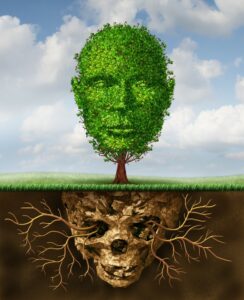Brewin, C. R. (2011). The Nature and significance of memory disturbance in posttraumatic stress disorder. Annual Review of Clinical Psychology, 7(1), 203–227. https://doi.org/10.1146/annurev-clinpsy-032210-104544
Deffenbacher, K.A., Bornstein, B. H., Penrod, S. D.,& McGorty, E. K. (2004). Ametaanalytic review of the effects of high stress on eyewitness memory. Law and Human Behaviour, 28(6), 687–706. https://doi.org/10.1007/s10979-004-0565-x
Ross, C. A. & Halpern, N. (2009) Trauma Model Therapy: A Treatment Approach for Trauma, Dissociation and Complex Comorbidity, Manitou Communications Inc.
Solinski, S. (2020). Recovered Memories of Child Sexual Abuse: Forgetting to Remember and Remembering to Forget, Part 2: The Nature of Memory and Ordinary Forgetting, Frontiers in the psychotherapy of Trauma and Dissociation, Vol 4., International Society for the Study of Trauma and Dissociation
Van der Hart, O., Brown, P., & Graafland, M. (1999). Trauma-induced dissociative amnesia in World War I combat soldiers. Australian and New Zealand Journal of Psychiatry, 33, 37-16.
Van der Kolk, B. (2014). The body keeps the score: Mind, brain and body in the healing of trauma. New York, NY: Viking.
Waring, J. D., Payne, J. D., Schacter, D. L., & Kensinger, E. A. (2010). Impact of individual differences upon emotion-induced memory trade-offs. Cognition & Emotion, 24(1), 150–167. https://doi.org/10.1080/02699930802618918
For people interested in an in-depth exploration of memory, I highly recommend the three part series by Dr Sylvia Solinski referenced below.
Solinski, S. (2020). Recovered Memories of Child Sexual Abuse: Forgetting to Remember and Remembering to Forget, Part 1: A Perennial Controversy, Frontiers in the psychotherapy of Trauma and Dissociation, Vol 4., International Society for the Study of Trauma and Dissociation
Solinski, S. (2020). Recovered Memories of Child Sexual Abuse: Forgetting to Remember and Remembering to Forget, Part 2: The Nature of Memory and Ordinary Forgetting, Frontiers in the psychotherapy of Trauma and Dissociation, Vol 4., International Society for the Study of Trauma and Dissociation
Solinski, S. (2020). Recovered Memories of Child Sexual Abuse: Forgetting to Remember and Remembering to Forget, Part 3: The Role of Dissociation In Extraordinary Forgetting, Frontiers in the psychotherapy of Trauma and Dissociation, Vol 4., International Society for the Study of Trauma and Dissociation











